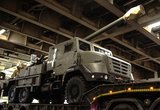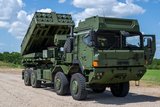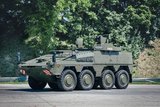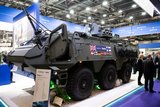Boeing team demonstrates fully immersive training environment for US Army ground forces
The Boeing Company was part of a team that demonstrated a fully immersive and integrated environment for ground forces training Sept. 29-30 at Fort Leonard Wood. The environment replicated an urban setting in Afghanistan, including costumed actors fluent in the local languages, realistic audio effects and typical architecture.
"Our customers want to provide their soldiers and Marines with a training environment as comprehensive as aircrews receive in aircraft simulators," said Mark McGraw, Boeing vice president for Training Systems & Services. "If we can train them in immersive and stressful environments before they deploy, we can help them make better decisions to accomplish their missions and return home safely."
Boeing has identified and created innovative training tools that can be seamlessly integrated into existing facilities at other military installations. These include the Virtual Mission Board -- a table with a built-in touch screen for tracking participants, controlling the exercise and recording data for the after-action review.
Boeing's industry partners for the event included Advantage Mold Inc., Creative Technologies Inc., the Leonard Wood Institute, Iowa State University, Laser Shot Inc., MiLanguages, Military Wraps, Ubisense and Zebra Imaging.
Source: Boeing
More from Land Warfare
-
![Lockheed Martin to look further afield for GMARS rocket system opportunities]()
Lockheed Martin to look further afield for GMARS rocket system opportunities
The HX truck is already in use in many NATO and allied countries around the world as a logistics vehicle and carrier for high-value systems, including missile firing weapons, so its use for the Global Mobile Artillery Rocket System makes logistical sense.
-
![Beyond Survivability: How Active Protection Systems Are Empowering Commanders (Podcast)]()
Beyond Survivability: How Active Protection Systems Are Empowering Commanders (Podcast)
As threats diversify and intensify, APS are proving essential not just for vehicle protection but also for enhancing operational freedom, effectiveness and mission success in contested environments.
-
Medium knocked out of British Army LMP, with CAVS as heavyweight champion
As the British Army seeks to modernise and consolidate its diverse vehicle fleet, yet another change in direction is underway.
























